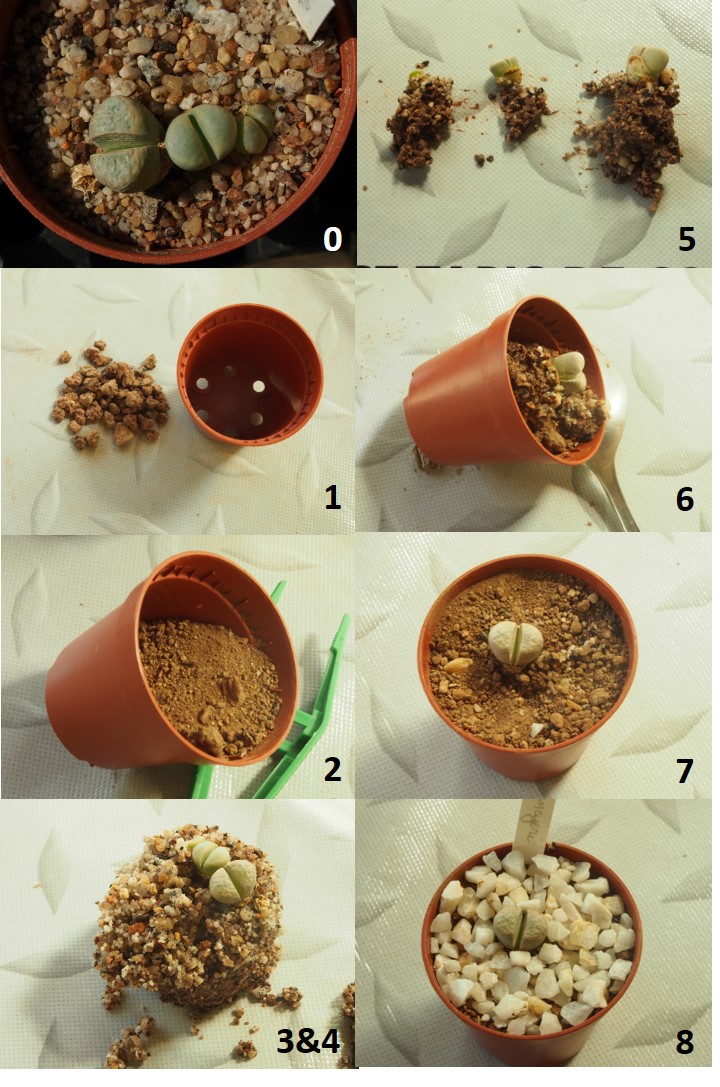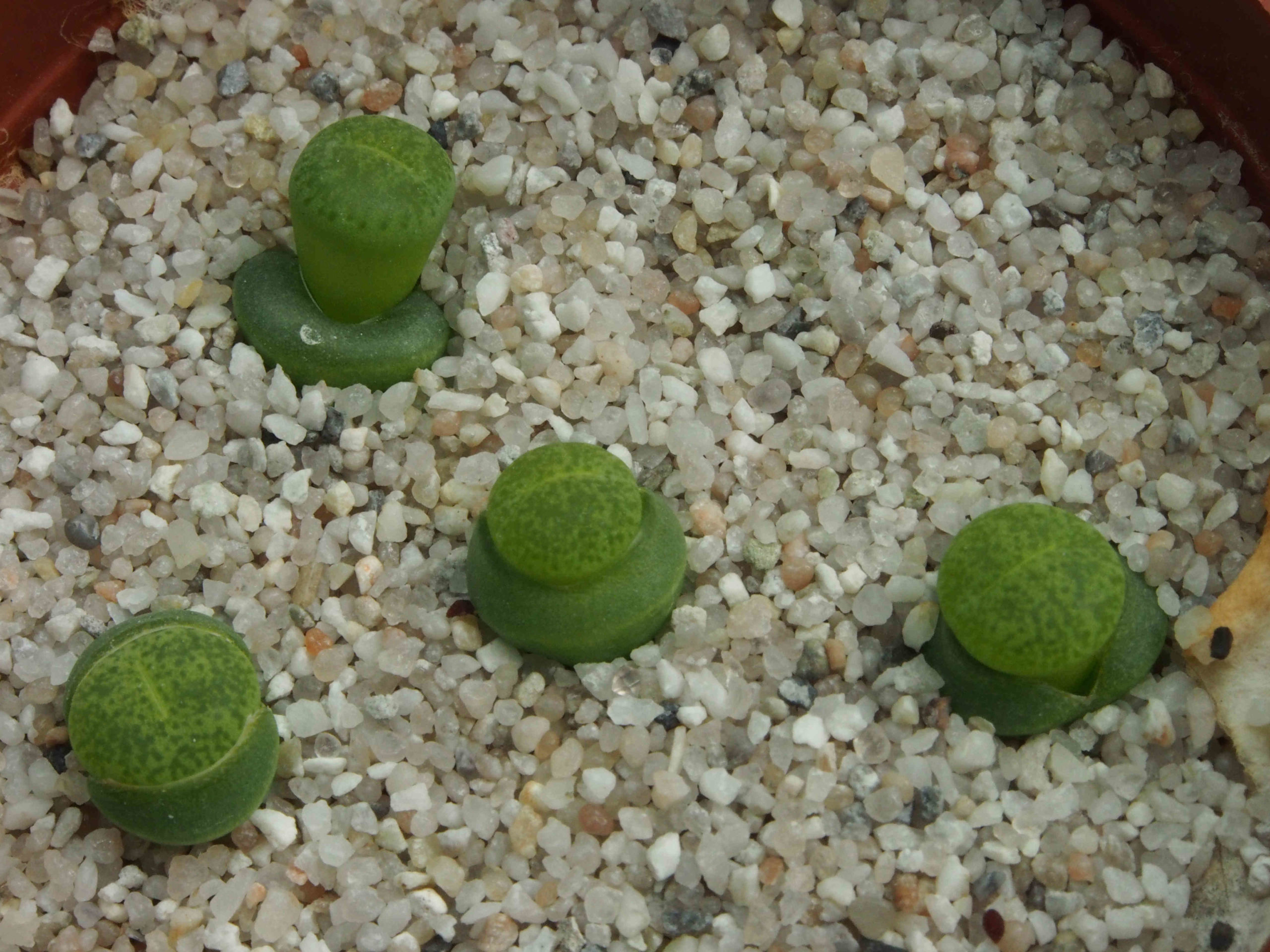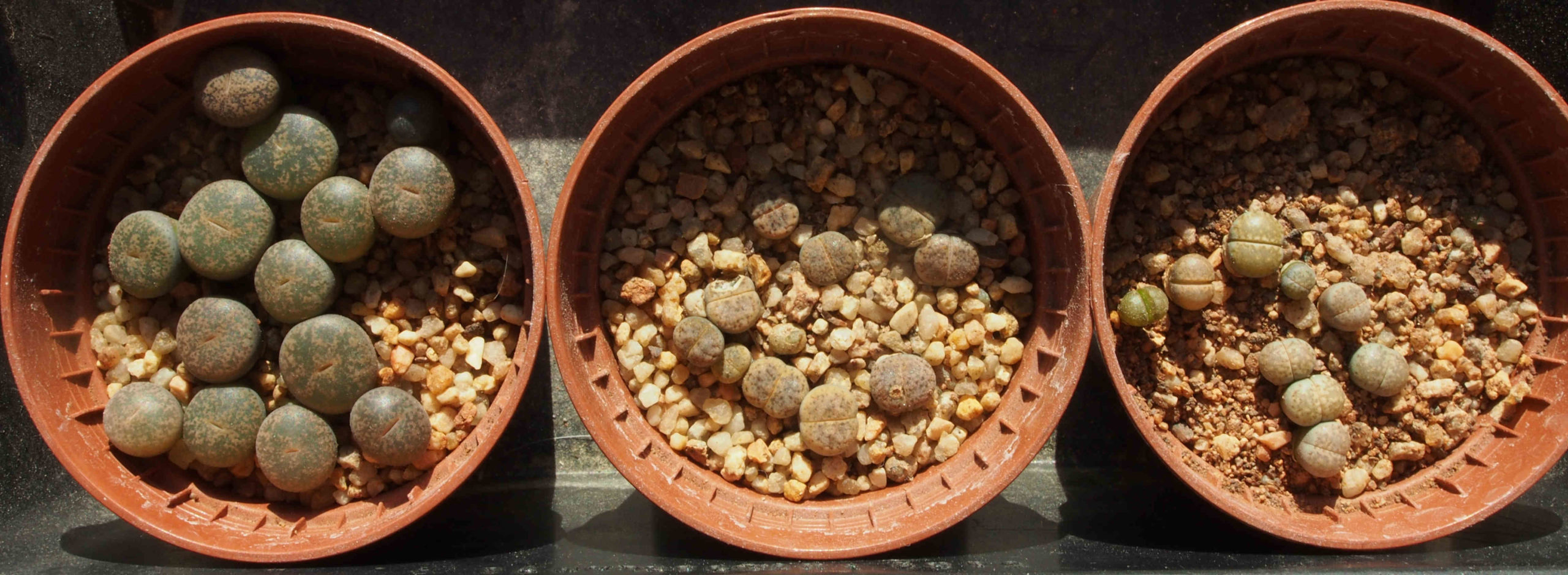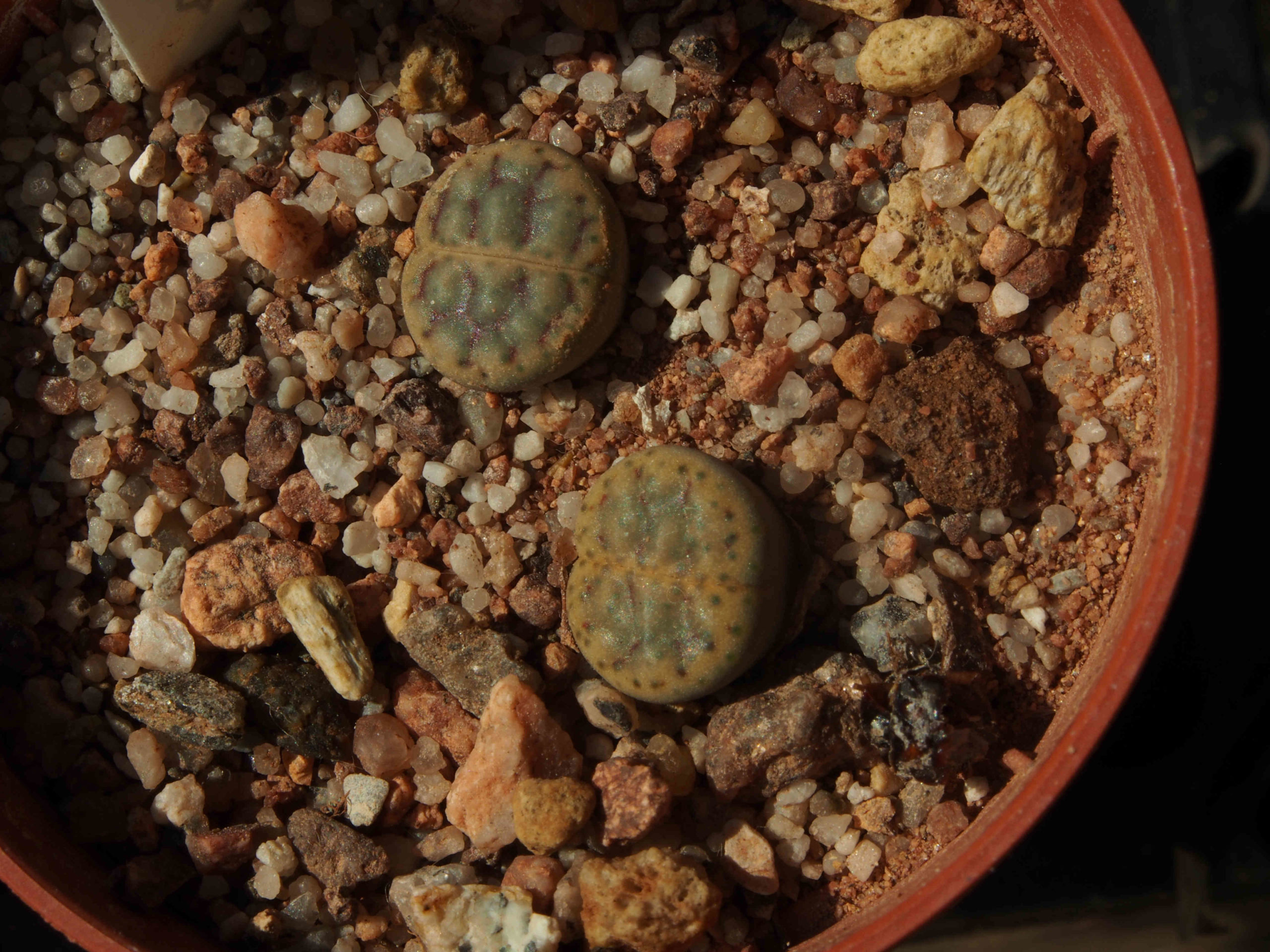Lithops seedlings are very fragile and take a long time to form the taproot which will guarantee their sustainability. It is therefore essential to wait until the first moult has passed before considering transferring each seedling to its new container. The photos show the start (left) and end (right) of the first moult on 6 and 9 month old seedlings of Lithops lesliei subsp. venteri ‘Ventergreen.
I recommend waiting 18 months before transplanting large species (lesliei, aucampiae, hookeri, etc.) and at least 2 years for the others. For sowing carried out in April 2020, transplanting of large species can be done in September 2021 and from May 2022 for the others. It is possible to carry out transplants from April to November, but I recommend focusing this activity over two periods: May-June and August-September which guarantee better recovery of the seedlings. The photo shows the size of seedlings of 3 species of Lithops (lesliei, gracilidelineata and julii) 15 months after sowing in 5 cm pots. It is clearly seen that the seedlings of Lithops lesliei are ready to be transplanted while the other two species need an additional season.
Just keep in mind that the date of sowing is not the only factor determining the favorable date for transplanting, the size of the seedlings and the development of their taproot also being linked to the density of the sowing and the sowing season. The following two photos illustrate the effect of competition on Lithops seedlings. On the left, a too dense seedling of Lithops meyeri clearly favored, after 2 years, one of the three seedlings still alive while eliminating (withered specimen on the left) or limiting the development (specimen on the right) of the other seedlings. On the right, a sparse sowing resulted in the lack of competition on seedlings of Lithops schwantesii also 2 years old.
In summary, two main factors will decide the transplanting date: a minimum size of the seedlings and / or the need to thin out too dense seedlings. To succeed in transplanting with a high recovery rate, I recommend following the steps illustrated by several pictures of the transplanting process of 2-year-old Lithops meyeri seedlings.
0) initial state = 3 seedlings of Lithops meyeri tightly packed together
1) put gravel at the bottom of a 5cm diameter pot then add half a centimeter of substrate suitable for the species to be transplanted (here quartzite in three grain sizes)
2) tilt the pot by 30 ° and add half a pot of substrate
3) soak the pot to be transplanted in a cup of water
4) extract the clod from the pot by tapping on the bottom
5) gently separate each seedling, trying to keep the substrate sheath which spontaneously remains stuck to the roots
6) place the seedling on the inclined plane formed by the substrate and complete with substrate up to the root collar
7) straighten the pot and the seedling then tamp down the substrate, add substrate up to the root collar if necessary
8) add half a centimeter of fine gravel (1 to 3 mm) on the surface to keep the seedling upright. Insert the label with the name and field number





